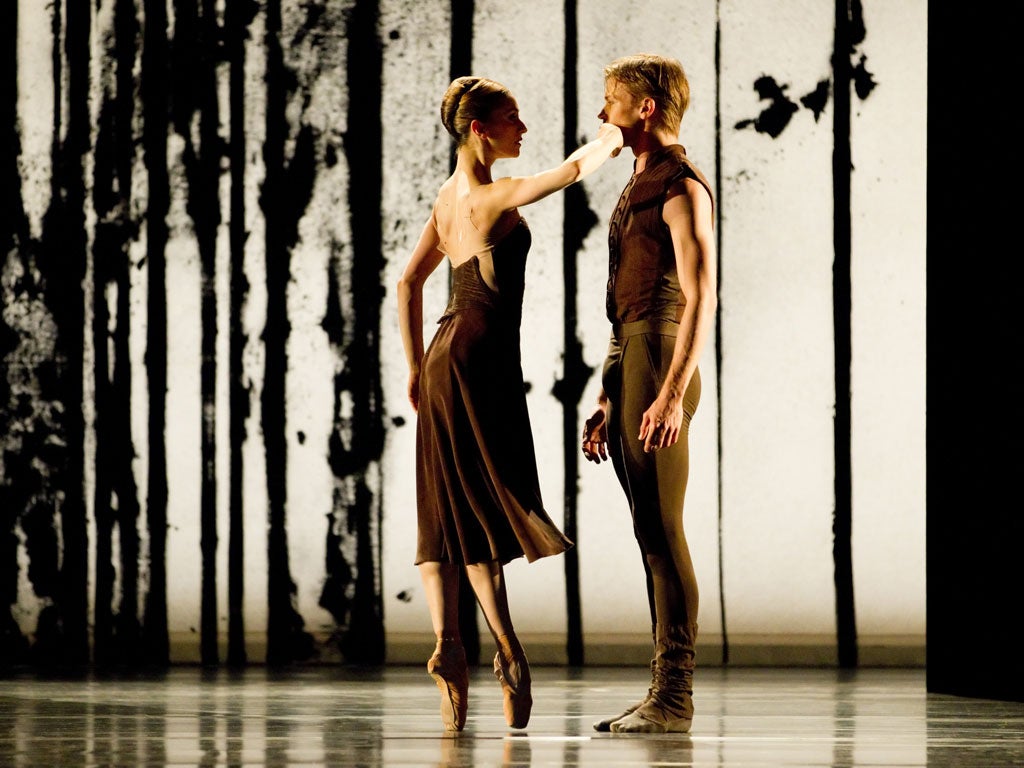Royal Ballet Triple Bill, Royal Opera House, London

The Royal Ballet's latest programme opens with a confident recent ballet, then tangles with the past, from Frederick Ashton's evocation of Elgar to Kenneth MacMillan's lament for the First World War.
Liam Scarlett's Asphodel Meadows, created last year, is a stylish ballet to Poulenc's concerto for two pianos. The title, and John Macfarlane's cloudy designs, suggest an afterlife. The ballet itself is built around three contrasting pas de deux, lyrical, dramatic and witty, while the corps de ballet echo or contrast the principals' dances. Scarlett's work comes up strongly at its first revival, but needs more rehearsal; there were some scrappy edges from the corps.
In the first duet, Marianela Nuñez wraps herself around Rupert Pennefather, clinging close even when he opens his arms wide. Scarlett matches the sharp accents of Poulenc's score: closed hands open with a snap, elbows suddenly move. The second duet is more sensuous: Tamara Rojo has a black velvet quality as she paces towards Bennet Gartside. (Young Leanne Cope gave a fresh performance in Saturday's matinee cast.) Laura Morera and Ricardo Cervera sail breezily through the twisty, fluent partnering of the third duet.
Ashton's Enigma Variations, created in 1968, recreates the composer's circle of friends, "pictured within" the score. It's a much-loved work in the Royal Ballet repertory, but tricky to revive. There are so many variations, so many friends, and so much Edwardian haberdashery. Julia Trevelyan Oman's costumes swathe the dancers in layers of period-accurate costume: frilled bodices and leg-of-mutton sleeves, miles of Harris Tweed. The personalities can be muffled.
Yet Ashton's picture of friendship is touching: in the Nimrod variation, Elgar, Lady Elgar and Jaeger walk together, breaking into arabesques, then walk again. They're reaching for something they can't quite grasp, but get closer to it through community and friendship. Christopher Saunders, Christina Arestis and Gartside give warm, understated performances. Edward Watson stands out in the speedy variation for Troyte.
In Kenneth MacMillan's Gloria, danced to Poulenc, the dancers are stylised figures on a battlefield, ghosts or memories. In Andy Klunder's designs, a steep rake and stark scaffolding suggest a no man's land of broken ground and dead trees. The dancers wear body tights, muddy reds and oranges for the men, greys and silvers for the women.
In the matinee cast, Leanne Benjamin was committed and strong, with Watson anguished as the accusing soldier. In the evening, Sarah Lamb's long limbs give her dances a floating elegance, while Carlos Acosta pushes angrily through his dances.
To 30 November (020 7304 4000)
Subscribe to Independent Premium to bookmark this article
Want to bookmark your favourite articles and stories to read or reference later? Start your Independent Premium subscription today.

Join our commenting forum
Join thought-provoking conversations, follow other Independent readers and see their replies